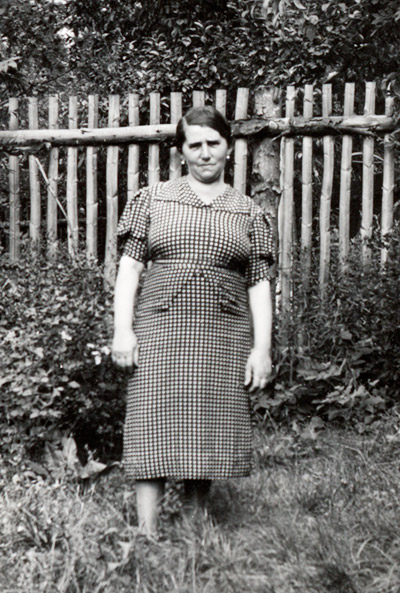Frida Tabak
Yiddish: Freidl
Frida Shulamit Tabak was born April 6 1892 in Knihynicze (Knyaginichi), a shtetl in the Rohatyn province in Austria-Hungary.
Name variations: Knihynicze [Pol], Knyaginichi [Rus], Kniehenitch [Yid], Knyazhnychi, Knyazhnichi, Knyagynychi, Knyaginitse, Knyaginiche, Kniginiche, Kniahynychi, Knjahynycy.
In 1900, its population was 1670, including 659 Jews, representing 40% of the total population. Knihynicze became Polish after 1918, then was part of the Soviet Union after WWII. It is now part of Ukraine
She married Leo Katz in 1911 and lived in Sokal until the end of WW1.
She left Sokal with her children Toni and Yitzhak in 1921 or 1922 and came to Gera in Thuringia, Germany, where her husband Leo had been living for a couple of years, setting up a new life for the family.

Frida, Gera, 1930's

Frida - 1930's?

Frida - Gera - probably 1936 or 1937
Frida was deported with her husband Leo to Poland on October 28, 1938. The couple first lived in Krakow. They were relocated to the Krakow ghetto in the Spring of 1941.
By late 1941 or 1942 Frida and Leo were relocated (i.e. deported once more?) in Tuchow, a small town near Tarnow.
The last sign of life from Frida was a Red Cross message sent to her daughter Toni, dated May 11, 1942, which simply said:
"We are well [in good health], and so is aunt Margule".
This was the last her daughter ever heard from her mother. Four months later, the Tuchow ghetto was liquidated (September 17 and October 28 1942) and its population deported to the Belzec death camp. This was most likely Frida's fate.